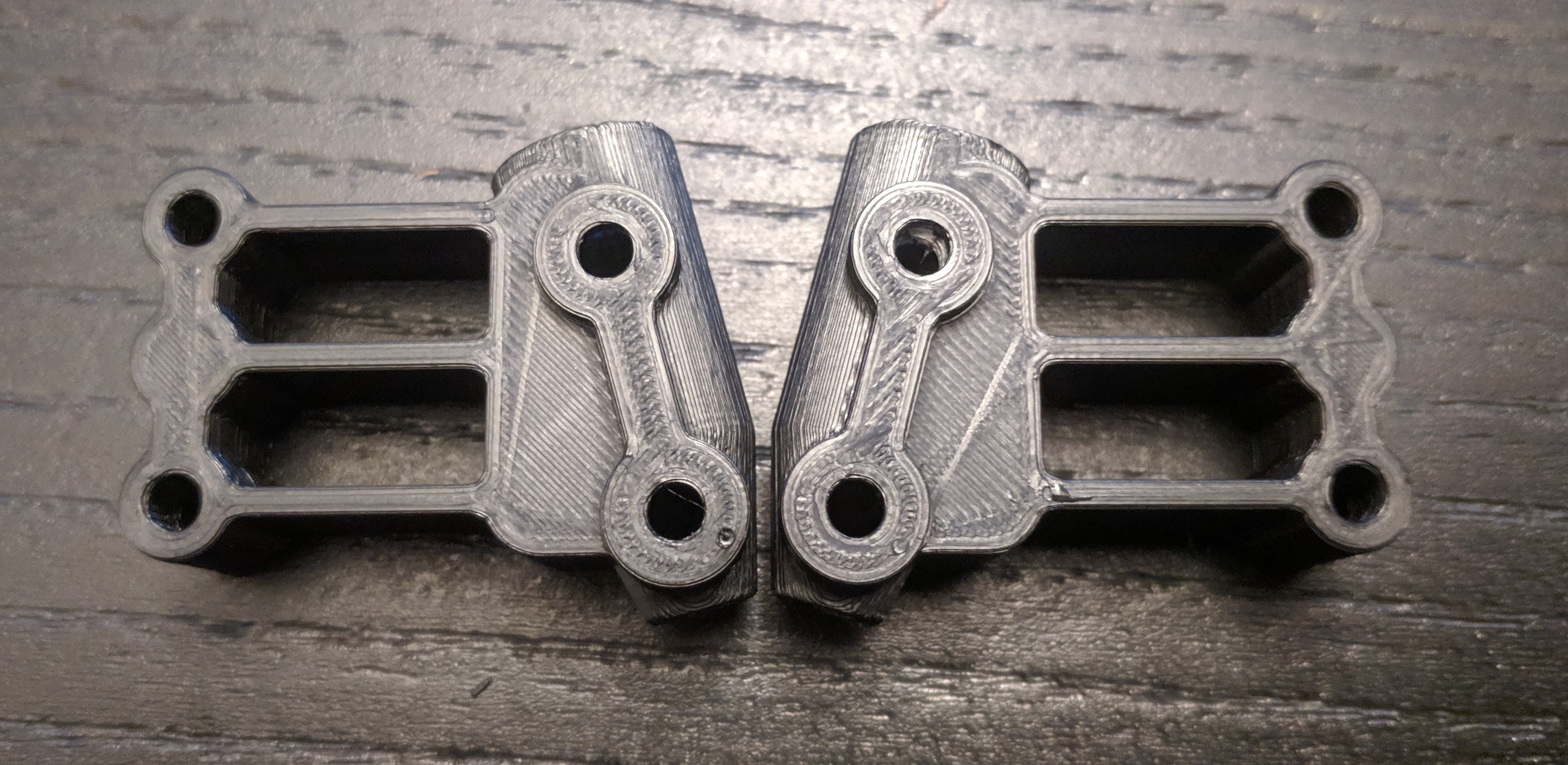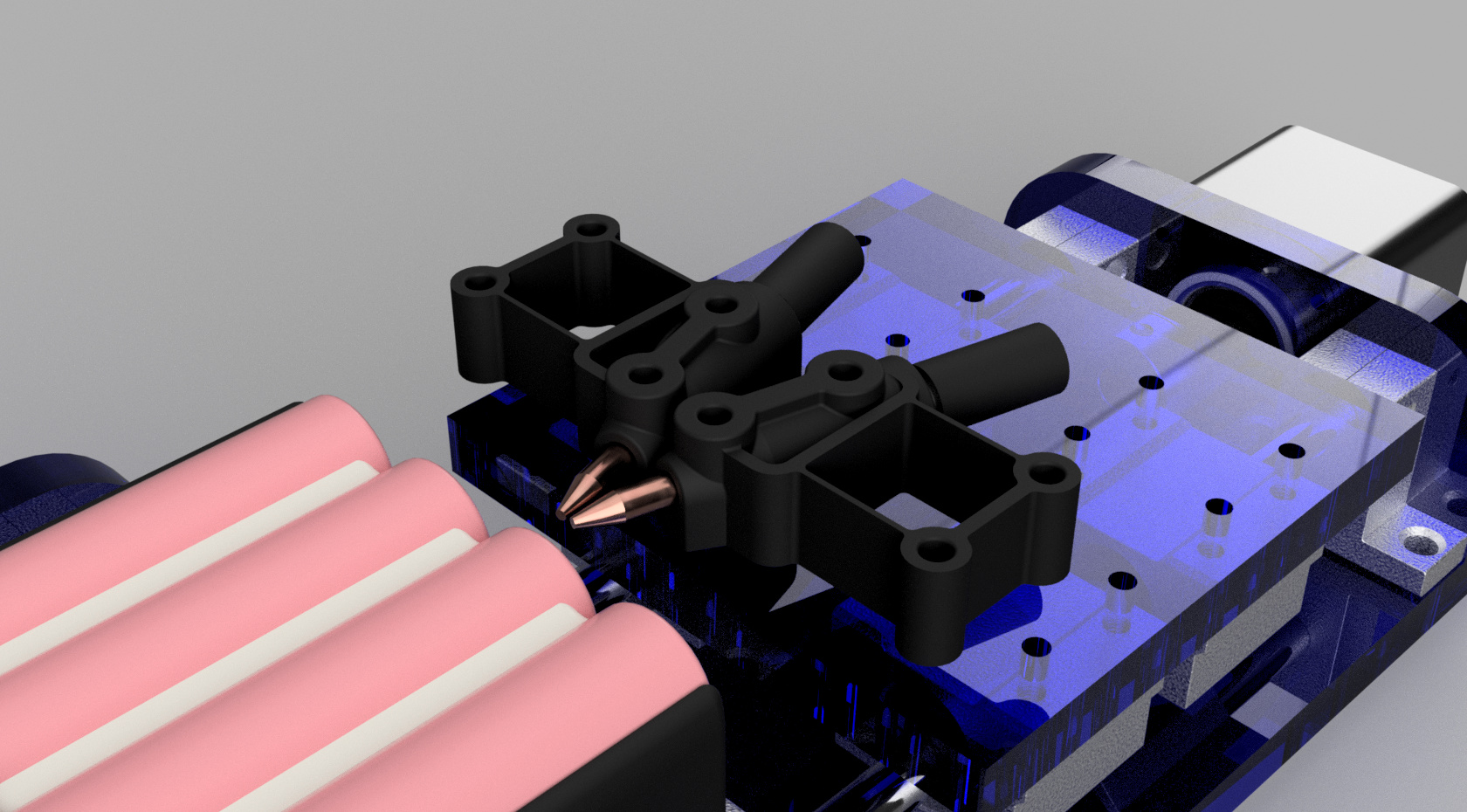Nice! How fast is it at the moment? Looks pretty decent and useable, speed wise.
First weld test this evening didn’t go great. All axis worked well and operated as expected but it seems like we had some problems getting the weld pressures correct.
We had assumed that bolting down both probes and spring loading the axis would provide even pressure on both welding tips but that is not the case. Whichever tip touches first stops the other from applying sufficient pressure.
I think we need to work out a way to independently spring load each of the tips so that they are both applying the same pressure. Not 100% sure how yet but I guess we can think about it for a day or so before trying again.
@IndyPilot it’s not super fast but it’s not suposed to be. The goal here is tidy and repeatable. Im not expecting to save time but if it requires less concentration for a better result then I will consider it a success.
Just a wuick question regsrding the trucks are those the regular trampa ultimates or are these the mini ones? Kr and thx
these are the mini trucks
New plan for interdependently holding the weld probes to evenly apply pressure on the tab

Now i just got to wait for it to finish printing 
Parts came out great but i underestimated how strong 3d printed parts are. There is no flex at all in these at all. guess i will have to thin out the cad and try again.

Attempt number 2 ready to print

Springs?
Looking good! One thing I might suggest is to not do all the welds for a cell at once, but go down the line, and then repeat for the next weld, so that each cell can cool off after each weld. (Maybe it doesn’t matter though, I’m not an expert; a thermal camera would show)
100%
Weld once per cell until cell n is reached then return to cell 1.
This little robot needs its own thread. Its too cool to be part of a build thread.
The printed springs is a cool idea and simple, but the consistency of them will be way lower than coil springs. I would think after like 50 flexes the spring force will start to drop dramatically.
@rusins & @akhlut I also had this concern but i did some testing and i dont think its a problem.
After doing a few welds it seems like the heat created by the weld is so localized that it is cooled by the surrounding metal quickly and its gone before you can even get your finger in there to feel it. doing 6 successive welds like this generated so little heat that you can barely even feel it.
@lrdesigns might split it off into its own thread at some point once i have some spare time to do a proper write up and upload the CAD.
With regards to the “printed springs” i have actually found them to be very reliable so far. The spring design is based around a “flexure” which basically exploits material flex to provide motion. Flexures are great because they can provide robust & reliable motion with very little backlash. If designed properly and you don’t exceed the materials elastic limit they can be very reliable and often outlast other linear mechanisms in industrial applications. They are ideal for scenarios where you need small amounts of accurate movement.
The tab welder also uses a similar concept for the z axis, relying on the flex of a long piece of acrylic to provide relativity linear motion for moving the weld head up and down.
There is a great video on flexures here (https://www.youtube.com/watch?v=97t7Xj_iBv0) which i recommend everyone watch if you design your own parts.
SIDE NOTE: something that i want to write down before i forget:
I have been considering some flexure based light mounts for my board that are joined to both the board and front hanger. I think it should be possible to use the board lean to steer the lights towards the direction you are riding 
I[quote=“ducktaperules, post:133, topic:43075”] With regards to the “printed springs” i have actually found them to be very reliable so far. The spring design is based around a “flexure” which basically exploits material flex to provide motion. Flexures are great because they can provide robust & reliable motion with very little backlash. If designed properly and you don’t exceed the materials elastic limit they can be very reliable and often outlast other linear mechanisms in industrial applications. [/quote]
I agree they can be good in injection molded parts, I am just skeptical they can do the same with FDM printed parts. Maybe in SLA without any walls it might be consistent.